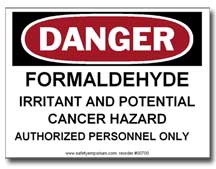| The Home page of ILPI's Safety Data Sheet (SDS) Resource, the leader in SDS information since 1995! | |
| The history and philosophy behind this resource. | |
| A curated collection of books and reference materials concerning Safety Data Sheets and closely related topics. | |
| Paste your plain text SDS into the SDS-Demystifier, and it will be converted into a hypertext-enriched document with links to detailed explanations of each key term. | |
| An extensive list of frequently asked questions about Safety Data Sheets including regulations, content, compliance, and more. | |
| A humorous take on Safety Data Sheet jargon. Fill in the blanks on our entry form to generate a personalized Unsafety Data Sheet to share with your coworkers. | |
| Since 1995, we've maintained this massive curated list of the best places to find Safety Data Sheets on the Internet. | |
| Way more than a glossary, this hypertext-enhanced resource covers hundreds of SDS-related terms and expert knowledge. Each entry includes both the SDS relevance and links to additional authoritative resources. | |
| Archived results of Safety Data Sheet related polls taken by some of our millions of site visitors | |
| You are here! The OSHA regulations behind SDS regulations, including the inspection guidelines and over 400 official interpretations letters under the Hazard Communication Standard | |
| Commercial suppliers of SDS authoring and management software as well as cloud compliance services. | |
| Commercial companies that will create SDS's for your specific needs as well as SDS translation companies. |

Safety signs, banners, and scoreboards? Get yours at Safety Emporium!
| Title:02/11/2004 - Application of the hazard communication standard to latex paints containing less than 6% crystalline silica. | |
| Record Type: Interpretation | Standard Number: 1910.1200 |
OSHA requirements are set by statute, standards and regulations. Our interpretation letters explain these requirements and how they apply to particular circumstances, but they cannot create additional employer obligations. This letter constitutes OSHA's interpretation of the requirements discussed. Note that our enforcement guidance may be affected by changes to OSHA rules. Also, from time to time we update our guidance in response to new information. To keep apprised of such developments, you can consult OSHA's website at https://www.osha.gov
February 11, 2004
Ms. Allison Keane, Esq.
Counsel, Government Affairs
National Paint and Coatings Association
1500 Rhode Island Avenue, N.W.
Washington, D.C. 20005
Dear Ms. Keane:
Thank you for your February 5, 2002 letter to Mr. Steven Witt, Director for the Occupational Safety and Health Administration's (OSHA's) Directorate of Standards and Guidance. Your letter was forwarded to OSHA's Directorate of Enforcement Programs (DEP); we received it on April 17, 2003. This letter constitutes OSHA's interpretation only of the requirements discussed and may not be applicable to any statement or scenario not delineated within your original correspondence. Specifically, you requested a letter of interpretation addressing eliminating the need for application of the Hazard Communication Standard (HCS) to latex paints containing less than 6 percent crystalline silica. We apologize for the delay in responding to your request. Please be assured that your inquiry has received very thorough consideration.
Accompanying your letter was a study commissioned by the National Paint and Coatings Association (NPCA) to examine exposures of painters to crystalline silica during spray painting and sanding activities ("Exposure to Crystalline Silica and Estimation of the Associated Human Health Risks from Painting and Sanding Interior Flat Latex Paint," Radian International, September 11, 2000). As we understand from this study and your letter, flat latex paints can contain as much as 6 percent crystalline silica in the form of cristobalite, although most formulations contain less than 1 percent crystalline silica.
In this study, Radian International reported that crystalline silica was detected only in three breathing-zone air samples for respirable particulate taken during the sanding activities on surfaces painted with the 6 percent crystalline formulation; no respirable particulate was detected in any of the 0.1 and 0.5 formulations. Based on these results, it is NPCA members' belief that data from this study represent "a proper characterization of the range of anticipated downstream exposures..." Your letter requests that NPCA members be allowed to "accurately consider this data in the hazard determination process for its latex and paint products and those containing less than 6% crystalline silica." The request is made that flat paints containing less than 6 percent crystalline silica not be subject to the HCS information transmittal requirements.
The Agency cannot grant this request, as it has stated from the outset that the HCS is based on the premise that chemicals have inherent characteristics that pose potential hazards and workers have the right to know what those potential hazards are. The concept of exempting a substance from coverage due to a determination of potential risk during downstream exposure was specifically rejected during the rulemaking process for the HCS. Also rejected was inclusion of a de minimis concept, i.e., that OSHA exempt releases of "small" amounts of a hazardous chemical during normal conditions use. These approaches are not consistent with the intent of the HCS to prevent effects from occurring by providing information prior to putting the employee at risk.
Exposure calculations, as conducted in the Radian study, assess risk, and are not permitted in determining whether a chemical is covered by the Hazard Communication standard. Chemical manufacturers, distributors, or importers may not exclude hazards based on presumed or perceived levels of exposure downstream because in the supplier's estimate, presumed exposures will not be high enough to cause the effect. These issues (health effects and exposure) should be addressed in training programs by the downstream employer.
Therefore, the manufacturer must consider that if normal conditions of use include actions such as grinding or sanding on a product that could release crystalline silica, then the product would be covered by the HCS, and the presence of silica must be indicated on the Material Safety Data Sheet, and appropriate warnings must appear on the label.
The Agency has further determined that the letter of interpretation dated March 15, 1989 entitled, "Application of the HCS to certain products containing crystalline silica" and referenced in your letter (copy attached), does not accurately represent OSHA's policy with regard to the HCS and will be withdrawn. Several other letters of interpretation which do support our policy and which are available on our website include: "Crystalline silica considered a carcinogen under the HCS" dated September 20, 1988; "Applicability of the HCS to crystalline silica, when bound in a polymeric compound and silicone rubber elastomers" dated February 8, 1989; "Regarding labeling requirements under the OSHA's Hazard Communication Standard" dated May 16, 1990; "Label requirements for crystalline silica" dated February 11, 1991; and "Provisions of the Hazard Communication Standard dated June 20, 1997. You may wish to refer to these letters for further clarification on our policy in regard to this issue.
Thank you for your interest in occupational safety and health. We hope you find this information helpful. OSHA requirements are set by statute, standards, and regulations. Our interpretation letters explain these requirements and how they apply to particular circumstances, but they cannot create additional employer obligations. This letter constitutes OSHA's interpretation of the requirements discussed. Note that ourenforcement guidance may be affected by changes to OSHA rules. Also, from time to time we update our guidance in response to new information. To keep apprised of such developments, you can consult OSHA's website at https://www.osha.gov.
Sincerely,
Richard E. Fairfax, Director
Directorate of Enforcement Programs
The original official public domain version of this document is available from OSHA at https://www.osha.gov/laws-regs/standardinterpretations/2004-02-11-0.

